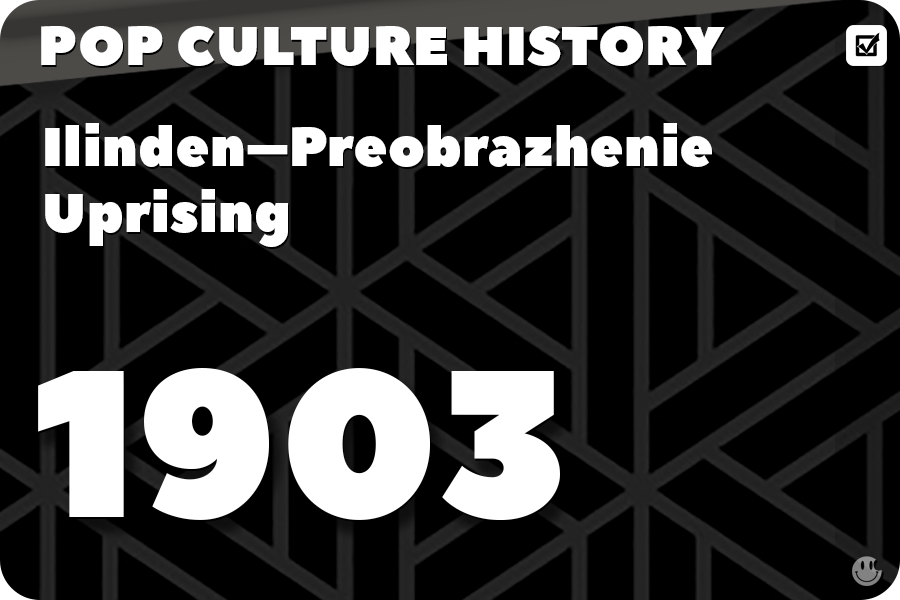 |
Ilinden–Preobrazhenie Uprising |
The Ilinden–Preobrazhenie Uprising was an organized revolt against the Ottoman Empire in the early 20th century. It was led by the Internal Macedonian-Adrianople Revolutionary Organization (IMARO) and was an effort to establish an autonomous region within the Macedonian and Adrianople (now Edirne) territories. Dates and Details:
Ilinden–Preobrazhenie Uprising Facts:
Effects on Pop Culture:
Prominent People and Countries:
|









